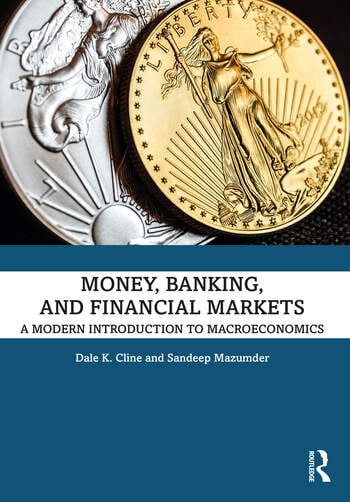Buy The Book

Game-Changing Economic Theory
Learn today’s macroeconomic theories that are changing today’s economic position
This innovative text offers an introduction to money, banking, and financial markets, with a special emphasis on the importance of confidence and trust in the macroeconomic system. It also presents the theory of endogenous money creation, in contrast to the standard money multiplier and fractional reserve explanation found in other textbooks. The U.S. economy and financial institutions are used to explain the theoretical and practical framework, with international examples weaved in throughout the text. It covers key topics including monetary policy, fiscal policy, accounting principles, credit creation, central banks, and government treasuries. Additionally, the book considers the international economy, including exchange rates, the Eurozone, Chinese monetary policy, and reserve currencies.
Reader Reviews
A “Must Read” for understanding fundamentals of the economy and important related topics
“Finally, a macroeconomics book that makes sense! Dale Cline and Sandeep Mazumder remove the fog surrounding macroeconomics and present a clear view of how the economy actually works, how money is created, and touch on many other interesting topics including Real Estate, Oil, Gold, and Cryptocurrency. This book is a rare example of complex ideas presented in an easy-to-understand fashion. Whether you are a business student, investor, bank employee, or just an everyday reader; I highly recommend this book for anyone interested in macroeconomics.”
Very accessible approach to understanding monetary policy, banking, credit, and macroeconomics
“This book explains the key principles and mechanisms underlying monetary policy, money growth, banking, credit, and related macroeconomic topics in a very accessible plain-english way that should be understandable to most. It would work well obviously for an undergraduate course in money, credit, and banking, but it would also be excellent recommended reading in finance courses on financial markets & investments or fixed income where professors often try to describe the very concepts written in the book without hitherto having had a resource like this to refer students to.”
